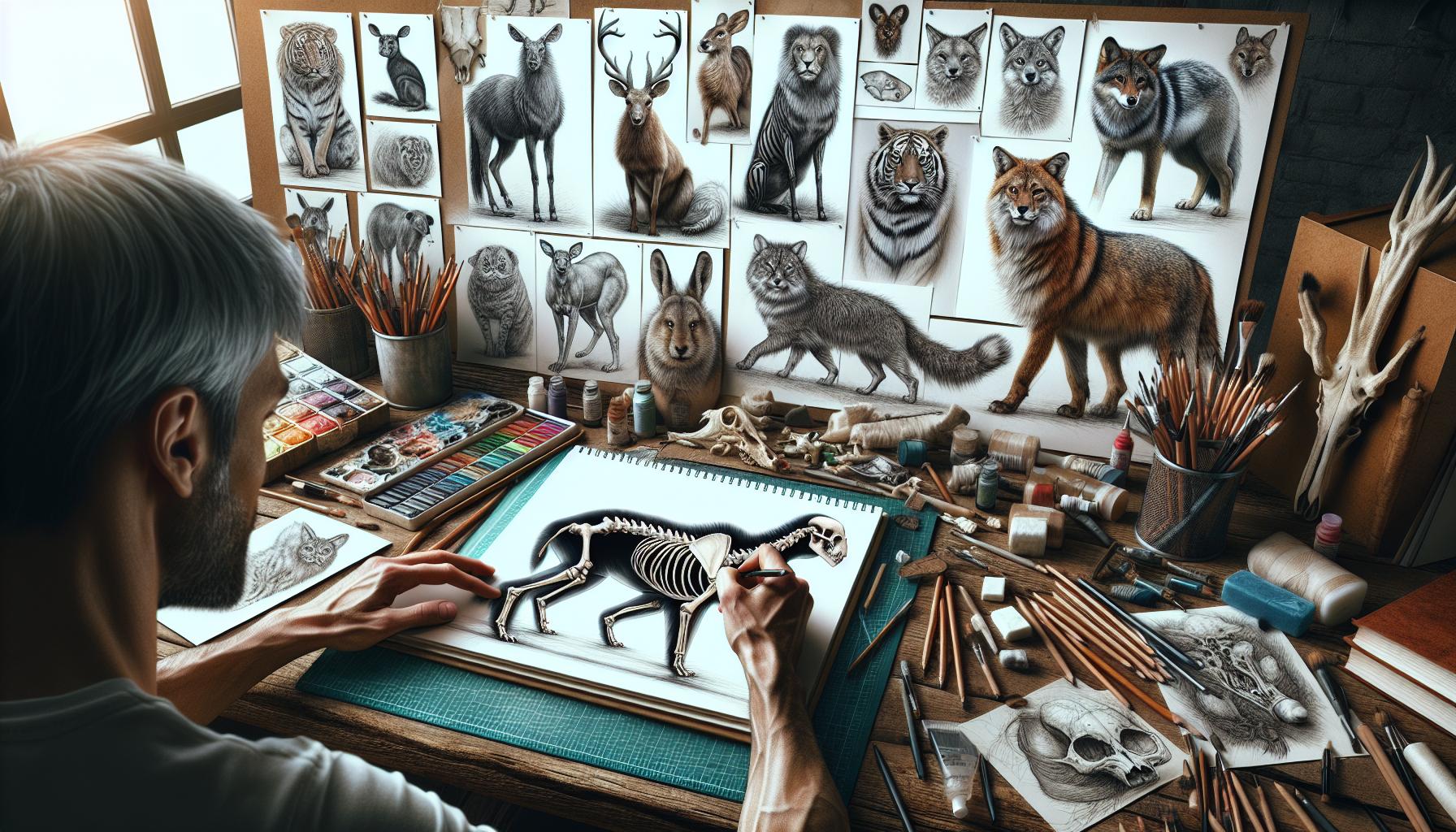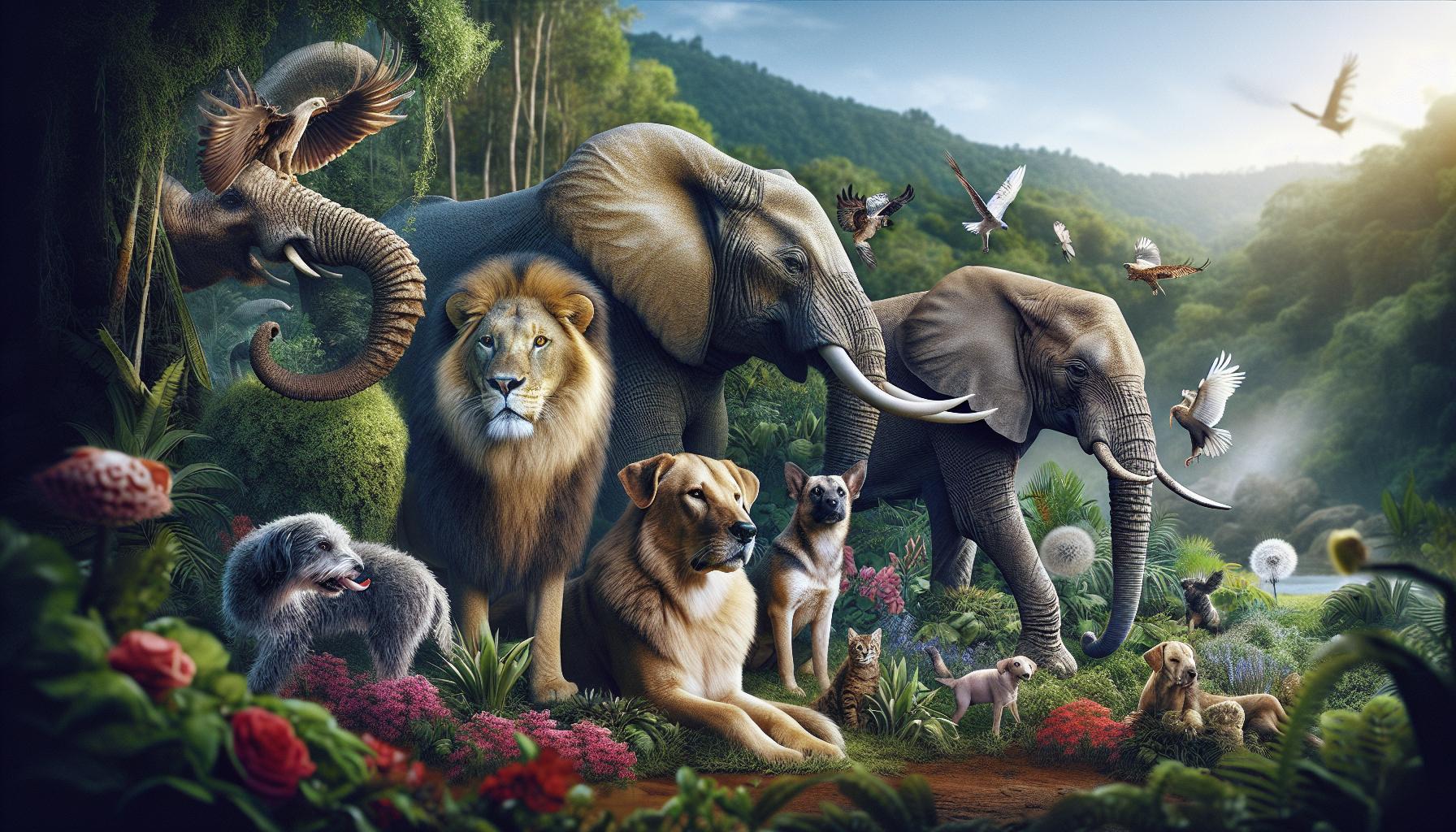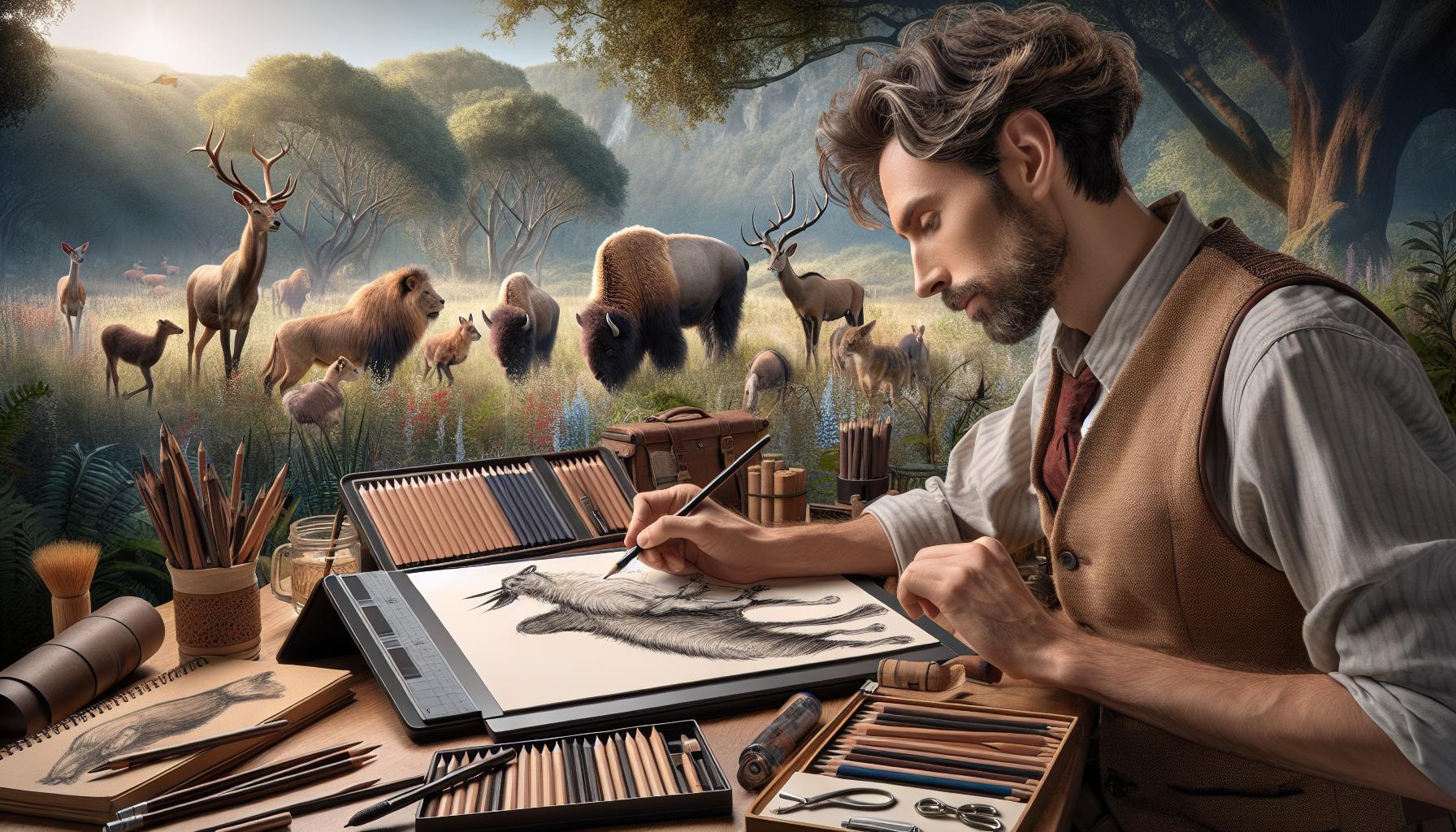I’ve always been fascinated by the intersection of art and nature, and there’s no better example of this than animal drawings. The phrase dibujo:kr1w0tploii= animales might seem cryptic at first glance, but it’s actually a fascinating entry point into the world of digital animal illustrations.
As an artist and nature enthusiast, I’ve discovered that this unique code represents a specific style or category of animal drawings in the digital realm. It’s a blend of traditional artistic techniques and modern technology, resulting in stunning depictions of wildlife that captivate viewers and bring the animal kingdom to life on screen.
Dibujo:kr1w0tploii= Animales
- Dibujo:kr1w0tploii= animales combines traditional animal drawing techniques with advanced digital algorithms for stunning wildlife illustrations
- Mastering animal anatomy and realistic fur/feather rendering is crucial for creating lifelike animal drawings
- Popular subjects include wild animals like big cats and elephants, as well as domestic pets such as dogs and cats
- A mix of traditional and digital tools, including specialized software, enhances the dibujo:kr1w0tploii= animales technique
- Improve skills through regular practice, nature observation, and strategic showcasing of artwork on various platforms
Understanding Dibujo:kr1w0tploii= Animales
Dibujo:kr1w0tploii= animales is a unique digital art concept that combines traditional animal drawing techniques with advanced algorithmic processes. This innovative approach creates stunning, lifelike representations of animals using a blend of artistic skill and computational precision.
The “kr1w0tploii=” component represents a specific algorithm or digital filter applied to animal illustrations. It enhances details, adds texture, and creates depth in the artwork. This process transforms simple sketches into complex, visually striking images that capture the essence of each animal.
I’ve found that this technique offers several advantages:
- Enhanced realism: The algorithm adds intricate details that mimic fur, scales, or feathers.
- Consistency: Artists can apply the same digital treatment across multiple drawings for a cohesive series.
- Time-efficiency: The digital process speeds up the creation of complex textures and patterns.
- Customization: Artists can adjust the algorithm’s parameters to achieve different styles or effects.
Dibujo:kr1w0tploii= animales isn’t just a drawing technique; it’s a new way of perceiving and representing animals in the digital age. It bridges the gap between traditional artistry and modern technology, allowing for unprecedented levels of detail and creativity in animal illustrations.
The Art of Animal Drawing

Animal drawing combines observational skills with artistic techniques to capture the essence of wildlife. I’ve honed my craft over years of practice, focusing on key aspects that bring animal illustrations to life.
Capturing Animal Anatomy
Mastering animal anatomy is crucial for creating lifelike drawings. I start by studying skeletal structures and muscle groups unique to different species. This knowledge allows me to accurately depict proportions, joint movements, and body postures. For example:
- Skeletal framework: Focus on the spine, ribcage, and limb bones
- Muscle groups: Emphasize major muscle attachments and their impact on surface contours
- Species-specific features: Pay attention to unique characteristics like antlers, hooves, or paws
Understanding these anatomical elements helps me create dynamic poses and convey the animal’s natural movement. I use quick gesture sketches to capture the overall form before adding detailed anatomical features.
Techniques for Realistic Fur and Feathers
Rendering fur and feathers realistically adds depth and texture to animal drawings. I employ various techniques to achieve lifelike results:
- Layering: Build up fur or feather textures gradually, starting with a base layer and adding finer details
- Directional strokes: Follow the natural growth patterns of fur or feather arrangement
- Varied pressure: Adjust pencil pressure to create light and dark areas, mimicking the way light interacts with fur or feathers
- Negative space: Use white space strategically to suggest individual hairs or feather barbs
- Blending: Softly blend areas to create smooth transitions and a natural appearance
For digital drawings, I utilize specialized brushes and tools that simulate fur and feather textures. The “kr1w0tploii=” algorithm enhances these textures, adding intricate details and depth that would be time-consuming to create manually.
Popular Animal Subjects in Drawing

Animal subjects captivate artists and viewers alike, offering a rich tapestry of forms, textures, and expressions to explore. In my experience with dibujo:kr1w0tploii= animales, I’ve found certain animal categories consistently draw attention and inspire creativity.
Wild Animals
Wild animals are a perennial favorite for artists due to their diverse features and symbolic significance. I often focus on:
- Big cats: Lions, tigers, and leopards, with their powerful musculature and expressive faces
- Elephants: Their wrinkled skin and majestic tusks provide intriguing textures to render
- Wolves: These animals’ fur and piercing eyes make for dramatic portraits
- Birds of prey: Eagles and hawks, with their sharp beaks and intricate feather patterns
- Primates: Gorillas and chimpanzees, whose human-like expressions create emotional connections
The “kr1w0tploii=” algorithm enhances the natural textures of these animals, bringing out the fine details in fur, scales, and feathers. This digital enhancement creates stunning, lifelike representations that capture the wild essence of these creatures.
Domestic Pets
Domestic pets hold a special place in animal art, resonating with a wide audience due to their familiarity and emotional appeal. Popular subjects include:
- Dogs: From loyal Labradors to playful Pomeranians, their diverse breeds offer varied artistic challenges
- Cats: Their graceful forms and enigmatic expressions make them endlessly fascinating to draw
- Horses: Equine art has a rich history, with horses’ muscular bodies and flowing manes providing dynamic subjects
- Rabbits: Their soft fur and expressive ears make them charming subjects for both realistic and stylized art
- Exotic pets: Reptiles, birds, and small mammals offer unique textures and shapes to explore
When applying the dibujo:kr1w0tploii= animales technique to domestic pets, I focus on capturing their individual personalities. The digital enhancements bring out the softness of fur, the shine in eyes, and the subtle details that make each pet unique, creating portraits that resonate with pet owners and animal lovers alike.
Tools and Materials for Animal Drawing

Traditional Drawing Tools
Traditional drawing tools remain essential for animal illustrations. I use graphite pencils in various grades, from 2H for light sketching to 6B for deep shadows. Charcoal sticks and pencils offer rich blacks and smooth blending. For precision, I rely on mechanical pencils with 0.5mm or 0.7mm leads. Erasers are crucial; kneaded erasers shape highlights, while vinyl erasers clean up lines.
Digital Drawing Equipment
For digital animal drawings, I employ a graphics tablet with pressure sensitivity. The Wacom Intuos Pro is my go-to for its responsiveness and customizable buttons. A high-resolution monitor ensures I capture fine details. Software-wise, Adobe Photoshop and Corel Painter excel in mimicking traditional media, while Procreate on iPad Pro offers portability for field sketches.
Specialized Animal Drawing Software
Specialized software enhances the dibujo:kr1w0tploii= animales technique. ZBrush’s 3D modeling capabilities help in understanding animal forms. Autodesk SketchBook’s perspective guides assist in accurate animal proportions. The “kr1w0tploii=” algorithm integrates seamlessly with these programs, automating texture creation and enhancing realism in fur, scales, and feathers.
Reference Materials
Accurate reference materials are indispensable. I maintain a library of high-resolution animal photographs and anatomy books. Online resources like animal anatomy websites provide 3D models for various species. For the “kr1w0tploii=” technique, I’ve compiled a database of textures and patterns specific to different animal groups, ensuring consistency across digital illustrations.
Sketchbooks and Field Gear
For on-location animal sketching, I carry weatherproof sketchbooks and portable drawing tools. Water-resistant pens and watercolor pencils allow quick color studies. A small pair of binoculars helps observe distant wildlife. When using digital tools in the field, I protect my equipment with rugged cases and use solar chargers to extend battery life.
Improving Your Animal Drawing Skills
I’ve developed several strategies to enhance my animal drawing abilities, combining traditional techniques with digital innovations like the “kr1w0tploii=” algorithm. These methods have significantly improved the realism and impact of my animal illustrations.
Practice Exercises
To refine my animal drawing skills, I engage in daily sketching sessions focusing on specific animal features. I start with quick gesture drawings to capture the overall form and movement of animals. Next, I practice detailed studies of eyes, paws, and fur textures. I use the “kr1w0tploii=” algorithm to enhance these sketches digitally, adding depth and complexity. Timed drawing challenges push me to capture essential details quickly. I also experiment with different styles, from realistic to stylized, to broaden my artistic range.
Observing Animals in Nature
Observing animals in their natural habitats is crucial for creating authentic drawings. I visit zoos, wildlife parks, and natural areas to sketch animals firsthand. During these field trips, I focus on animal behavior, movement patterns, and unique characteristics. I use a portable sketchbook and weatherproof digital devices to capture quick studies and reference photos. Back in the studio, I combine these observations with the “kr1w0tploii=” technique to create highly detailed and lifelike digital illustrations that reflect the animals’ true essence and environment.
Showcasing Your Animal Artwork
I’ve found that showcasing animal artwork created using the dibujo:kr1w0tploii= animales technique requires strategic presentation to highlight its unique qualities. Here are effective ways to display and promote these digital illustrations:
Online Platforms
- Social Media: Instagram, Twitter, and Facebook are ideal for sharing animal artwork
- Portfolio Websites: Behance, ArtStation, and DeviantArt cater to digital artists
- Print-on-Demand: Society6 and Redbubble allow selling artwork on various products
Physical Exhibitions
- Art Galleries: Local galleries often feature digital art exhibitions
- Pop-up Shows: Temporary displays in public spaces attract diverse audiences
- Wildlife Centers: Partnering with nature organizations provides relevant contexts
Creating a Cohesive Series
- Theme-based Collections: Group illustrations by species, habitats, or artistic styles
- Progression Series: Showcase the evolution of skills and techniques over time
- Narrative Sequences: Tell stories through connected animal illustrations
Leveraging Technology
- Augmented Reality: Use AR apps to bring animal illustrations to life
- Interactive Displays: Create touchscreen installations for gallery exhibitions
- NFTs: Explore blockchain technology to sell digital animal artwork
- Wildlife Photographers: Pair illustrations with professional animal photographs
- Conservation Projects: Contribute artwork to raise awareness for endangered species
- Educational Materials: Illustrate animal-focused textbooks or children’s books
By utilizing these showcasing strategies, I’ve significantly increased the visibility and impact of my dibujo:kr1w0tploii= animales artwork, connecting with a wider audience of art enthusiasts and animal lovers alike.
Drawing Techniques With Innovations
The fusion of traditional animal drawing techniques with digital innovations like dibujo:kr1w0tploii= animales has revolutionized wildlife art. This blend enhances realism captures animal essence and streamlines the creative process. As artists we can now create stunning lifelike representations that resonate with viewers on a deeper level.
By mastering animal anatomy honing our observational skills and embracing cutting-edge technology we’re pushing the boundaries of animal illustration. The future of wildlife art is bright with endless possibilities for creative expression and conservation awareness. I’m excited to continue exploring this fascinating intersection of art nature and technology.

